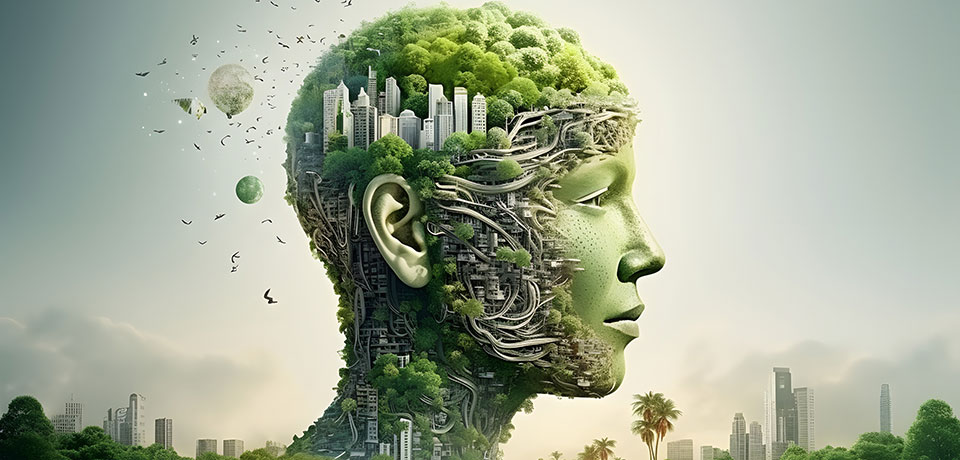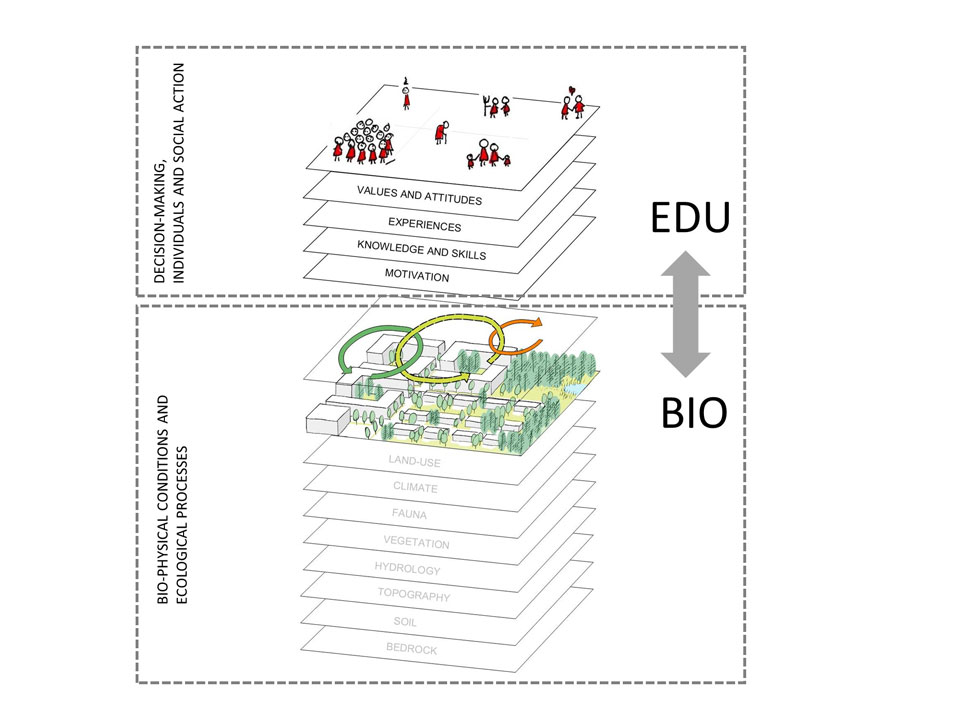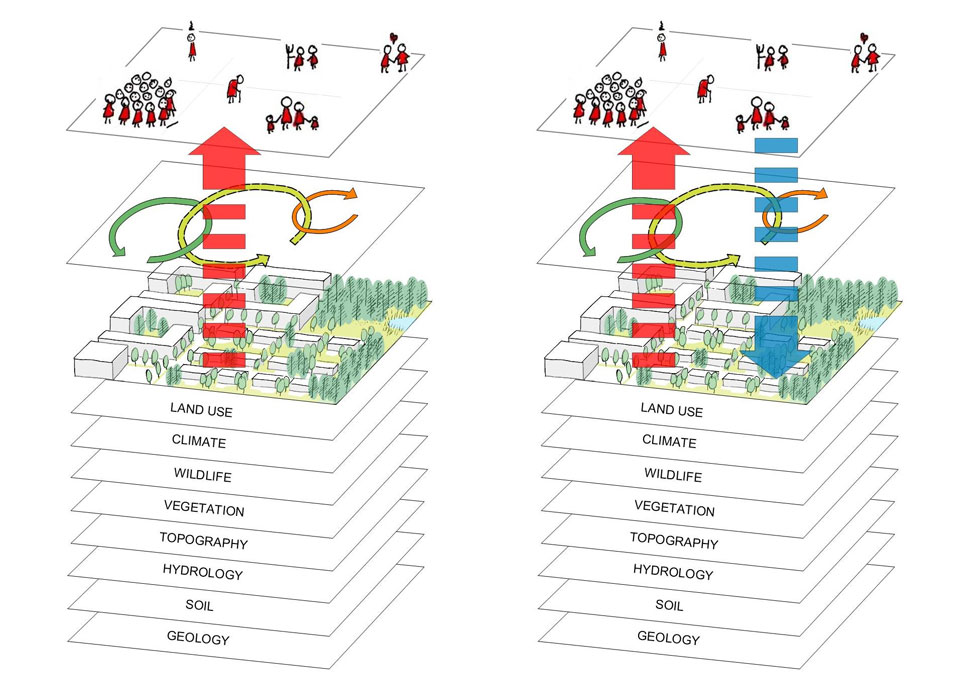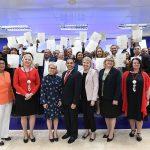
Essi Ryymin & Outi Tahvonen
As urbanisation accelerates, the need to create green cities becomes more urgent. Sustainable practices not only mitigate environmental degradation, but also improve the overall quality of urban life. Green and smart cities prioritise energy efficiency, waste reduction and green spaces, fostering healthier and more resilient communities. Education plays a key role in this transition, providing individuals with the knowledge and skills to embrace sustainable living.
Scientists and educational researchers working together
In recent years, the newly established research units at Häme University of Applied Sciences, HAMK Bio and HAMK Edu, have started to work together on a systemic perspective of sustainability transitions. This collaboration is essential as the sustainability transition concentrates on profound societal changes to achieve long-term sustainability. These changes include reducing resource consumption, mitigating environmental impacts, promoting equity, and enhancing resilience.
In the face of climate change adaptation, there is an urgent need for innovative carbon sequestration methods. While biophysical conditions and processes are undeniably crucial, it is equally important to reconsider the social dimension, individual behaviour, and societal decision-making processes. The social dimension encompasses a wide range of actors in urban green spaces, including residents and end users, authorities, experts, and policymakers.
In this context, the collaborative efforts of interdisciplinary scientists and educators have sparked new research and innovative thinking. For example, the exploration of ‘carbon-smart urban green’ and its integration into future urban planning and human activities is a testament to the transformative potential of this collaboration in shaping sustainable cities.
While the HAMK Bio approach includes the land use, climate, fauna, vegetation, hydrology, topography, soil, and bedrock of cities, education researchers are interested in individual and social actions, decision-making and the human values, attitudes, experiences, knowledge, and motivation that influence them (Figure 1).

By combining these perspectives, researchers are working together to understand better the wicked problems of urbanisation, carbon sequestration, and human well-being. In joint research projects, educators and scientists can explore the conditions for building green cities that are environmentally friendly, energy efficient, promote biodiversity, and create liveable and healthy communities.
It seems obvious that multidisciplinary research is needed, particularly in the urban context. Urban densification forces to integrate and overlap urban functions that could previously have been kept separate. It also requires more careful coordination of different objectives and perspectives, both for user groups and for the urban space. The likelihood of conflict between different users and groups, but also between authorities and politicians, increases.
HAMK Bio and HAMK Edu collaborative concepts in an urban context
Recent concepts of urban green see man and nature as an integrated pair, whereas conservation biology concepts, by definition, aim to protect nature from man. Urban green includes both the remnants of pre-constructed areas and heavily modified artificial biotopes, such as green roofs and green facades. Together, they provide a platform for living, recreation, and movement for people, flora and fauna.
The concept of ecosystem services aims to underpin the benefits people derive from a well-functioning nature. The concept of ecosystem services describes the one-way benefits people receive from nature. The concept of socio-ecological systems (SES) becomes applicable when people are seen as both recipients and supporters of the natural processes in the environment (Figure 2). SES provides a new avenue for multidisciplinary research into the relationship between people and urban nature, as the nature of change is decentralised, rapid and managed at multiple scales.

What are carbon-smart cities?
Carbon-smart cities are urban areas that prioritise reducing their carbon footprint and mitigating climate change. Attention must be paid to research and development of green spaces and urban forestry for carbon sequestration, energy-efficient buildings, and urban design. Educators remind us that collaboration and sharing of expertise between government, private sector, and community organisations are essential when planning for carbon-smart cities. New urban design is about learning together and from each other and making decisions together.
The development of carbon-smart cities serves the goals of the green transition, defined by the Ministry of the Environment of Finland (n.d.) as “a shift towards economically sustainable growth and an economy that is not based on fossil fuels and over-consumption of natural resources”. A green transition requires multidisciplinary research and the ability to share knowledge and solve problems across administrative boundaries.
Concrete actions of joint research and development
The researchers naturally have their discipline-specific research interests, but how do HAMK Bio and HAMK Edu scientists work together to share their interests and achieve something completely new? The HAMK teams have found several ways of working together, presented in the following:
1) Strengthening community engagement in the planning and developing green cities and providing coaching in research-based sustainable urban design and environmental protection. (Read more from Rintala, Lamberg, Honkamäki, Tahvonen, & Rapinoja, 2021; Suomalainen & Pirinen, 2020.)
2) Enhancing collaboration and knowledge sharing among bioeconomy professionals through facilitated and digital workshops for practitioners, educators, urban greening planners, architects, and city officials to learn about green design, renewable systems, and urban ecology. (Read more in Ryymin, Lamberg, & Pakarinen, 2020; Ryymin, Lamberg, & Hiltunen, 2020.)
3) Researching and developing higher education teachers’ competencies in bioeconomy (Ryymin, 2021; Rintala, Ryymin & Postareff, 2023) and study programmes on the importance of socio-ecological systems in the bachelor’s degree in Landscape Design and Construction and the master’s degree programme in Natural Environments and Promotion of Wellbeing (HAMK, n.d.).
4) Accelerating interdisciplinary research and innovation in bioeconomy by supporting interdisciplinary research teams in boundary-crossing learning, collaboration, and strategic research. (Read more from Ryymin & Lamberg, 2022; Vetoshkina, Lamberg, Ryymin, Rintala, & Paavola, 2022; Suomalainen & Tahvonen, 2022.)
5) Combining quantitative and qualitative research methods to explore carbon-smart urban greening, municipal decision-making processes, and maintenance practices and to develop an updated knowledge base for carbon-smart green building practices. (Rintala, Ryymin, & Tahvonen, 2023; Ryymin & Tahvonen, 2023)
The best of interdisciplinary research
Interdisciplinary research between natural and educational scientists is not always easy and requires a lot of dialogue about shared research interests, methods, and values (Lamberg, Ryymin, & Vetoshkina, 2022).
However, there are many advantages to cross-sectoral research. Interdisciplinary research brings together different perspectives and knowledge from various fields, which can lead to a more comprehensive or even eye-opening understanding of the challenge being studied.
A single discipline simply cannot tackle wicked problems such as building carbon-smart cities in an era of climate change. Interdisciplinary teams, at their best, identify new approaches and novel practical solutions through collaborative efforts.
Nevertheless, interdisciplinary research is fun and creates hope, agency, and positive perspectives for sustainability transitions.
Authors
Essi Ryymin, Principal Research Scientist, HAMK Edu
Outi Tahvonen, Principal Research Scientist, HAMK Bio
References
HAMK. (n.d.). Study Guide. https://hamk.opinto-opas.fi/home
Lamberg, L., Ryymin, E., & Vetoshkina, L. (2022). Money, time, or saving the world: Balancing valuations of ‘good’ interdisciplinary research. Nordic Journal of Science and Technology Studies, 10(1), 30–42. https://doi.org/10.5324/njsts.v10i1.4305
Ministry of the Environment of Finland. (n.d.). What is the green transition? https://ym.fi/en/what-is-the-green-transition
Rintala, H., Lamberg, L., Honkamäki, E., Tahvonen, O., & Rapinoja, L. (2021). Pihasuhde ja sen muutokset koronakeväänä. HAMK Unlimited Journal, 30.3.2021. https://urn.fi/URN:NBN:fi-fe202103308786
Rintala, H., Ryymin, E., & Postareff, L. (2023). Higher Education Teachers as Continuous Learners: A Study on Learning Needs and Informal Workplace Learning in a University of Applied Sciences in a Field of Bioeconomy. Manuscript in preparation.
Rintala, H., Ryymin, E., & Tahvonen, O. (2023). Towards carbon-smart urban green – the decision-makers in the construction process of residential courtyards. Manuscript in preparation.
Ryymin, E. (2021). Perspectives from Higher Education: Applied Sciences University Teachers on the Digitalization of the Bioeconomy. Technology Innovation Management Review, 11(2), 24–32. http://doi.org/10.22215/timreview/1420
Ryymin, E., & Lamberg, L. (2022). Multilevel Boundary Crossing and Dialogical Learning Mechanisms in Interdisciplinary Research Teams. The Learning Organization, 29(1), 38–51. https://doi.org/10.1108/TLO-09-2020-0172
Ryymin, E., Lamberg, L., & Hiltunen, A. (2021). Käytäntöjä toimivan virtuaalityöpajan järjestämiseen. HAMK Unlimited Professional, 13.1.2021. https://urn.fi/URN:NBN:fi-fe202101131699
Ryymin, E., Lamberg, L., & Pakarinen, A. (2020). How to Digitally Enhance Bioeconomy Collaboration: Multidisciplinary Research Team Ideation for Technology Innovation. Technology Innovation Management Review, 10(11), 31–39. http://doi.org/10.22215/timreview/1401
Ryymin, E. & Tahvonen, O. (2023). Hiiliviisaat kaupungit hengittävät vihreillä keuhkoillaan
hyvinvointia kaikille. HAMK Beat, 1.2.2023. https://blog.hamk.fi/hamk-beat/hiiliviisaat-kaupungit-hengittavat-vihreilla-keuhkoillaan-hyvinvointia-kaikille%E2%80%AF%E2%80%AF/
Suomalainen, S. & Pirinen, T. (2020). Päiväkoti Viiriäisen piha uudistettiin monipuoliseksi oppimisympäristöksi kestävän kehityksen tavoitteita edistäen. HAMK Unlimited Professional, 30.10.2020. https://urn.fi/URN:NBN:fi-fe2020102888644
Suomalainen, S. & Tahvonen, O. (2022). From Participation to Involvement in Urban Open Space Management and Maintenance. Sustainability, 14(19), 12697. https://doi.org/10.3390/su141912697
Vetoshkina, L., Lamberg, L., Ryymin, E., Rintala, H., & Paavola, S. (2022). Innovation activities in a university of applied sciences: redefining applied research. Journal of Applied Research in Higher Education, 15(2). https://doi.org/10.1108/JARHE-10-2021-0380





